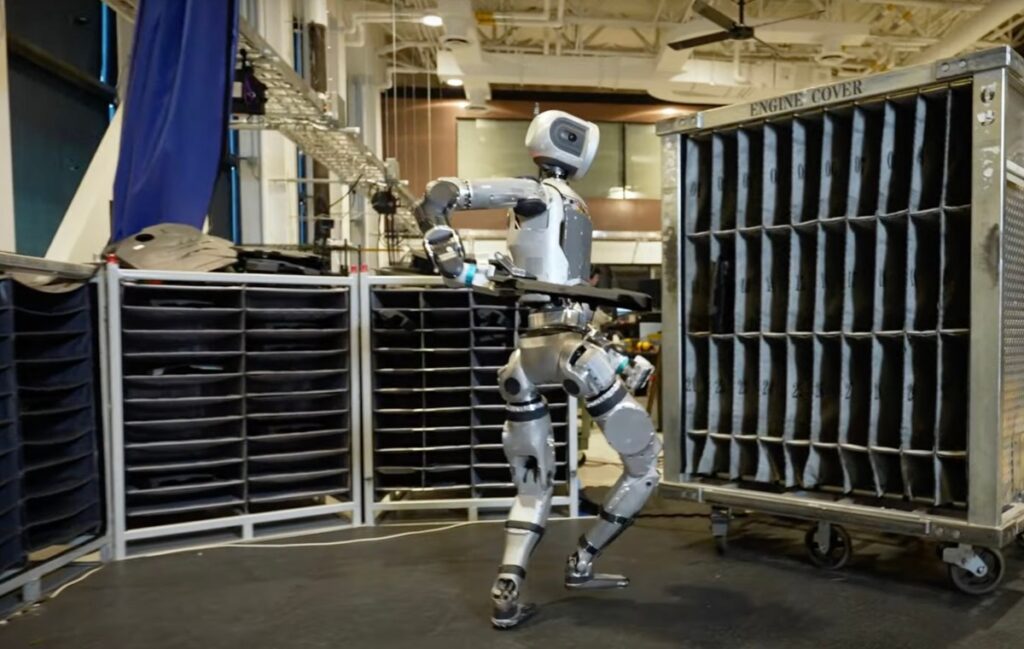Boston Dynamics’ Atlas Robot: A Leap into Autonomy and Efficiency
Boston Dynamics is making waves in the world of robotics with their latest iteration of the Atlas humanoid robot. Since its announcement back in April, the progress has been remarkable, with some exciting developments surfacing behind the scenes. A sneak peek in August showcased Atlas performing pushups, but the buzz has really intensified with the release of a new video that highlights the robot’s autonomous capabilities.
A Glimpse into the Future
The most recent footage presents Atlas diligently working in a controlled demo space, seamlessly transferring engine parts between bins. What’s particularly impressive is that Boston Dynamics emphasizes these actions are carried out autonomously—no pre-programmed movements or remote operation involved. This stance serves to differentiate their work from other humanoid demonstrations that might not be as genuine, a little jab that hints at the competitive landscape in robotics.
Partnership with Toyota Research Institute
Just two weeks before this unveiling, Boston Dynamics announced a partnership with the Toyota Research Institute (TRI), which is noteworthy for its potential to enhance Atlas’s intelligence and adaptability. While it remains unclear how much of the recent video is a direct outcome of this collaboration, the implications for the robot’s development are significant. Combining TRI’s advanced robotics learning algorithms with Atlas’s physical capabilities could revolutionize its performance in dynamic environments.
Smart Sensing in Action
Boston Dynamics points out that Atlas is equipped with a multitude of sensors—vision, force, and proprioceptive—that help the robot navigate its surroundings effectively. It can detect changes in its environment, such as moving fixtures, and respond to action failures like tripping or collision. These capabilities underscore the sophistication of the Atlas robot and highlight its potential for real-world applications, particularly in automotive factories where precise and efficient robotic assistance is crucial.
The Road Ahead for Humanoid Robots
The applications for Atlas, much like its rivals such as Figure, Tesla, and Apptronik, are initially geared towards the automotive industry. With Boston Dynamics now under the Hyundai umbrella, the alignment with Toyota’s cutting-edge research makes perfect sense. The automotive sector has long been a frontrunner in automation, and integrating advanced robots like Atlas could reshape production processes dramatically.
Adaptive Movement for Greater Efficiency
In the latest video, viewers can observe Atlas not just executing tasks but doing so with remarkable agility and strength. One standout feature is its ability to pivot at the waist, which enhances its efficiency and minimizes unnecessary movement. This thoughtful design translates to significant time savings, making Atlas a viable option for industrial applications where every second counts.
Wrapping Up
The advancements showcased by Boston Dynamics with the Atlas robot suggest a bright future for humanoid robotics, blending state-of-the-art technology with practical applications. As Atlas continues to evolve, we can expect to see its role expand in various sectors beyond automotive manufacturing, transforming how we think about robotics in our daily lives.
The AI Buzz Hub team is excited to see where these breakthroughs take us. Want to stay in the loop on all things AI? Subscribe to our newsletter or share this article with your fellow enthusiasts.




